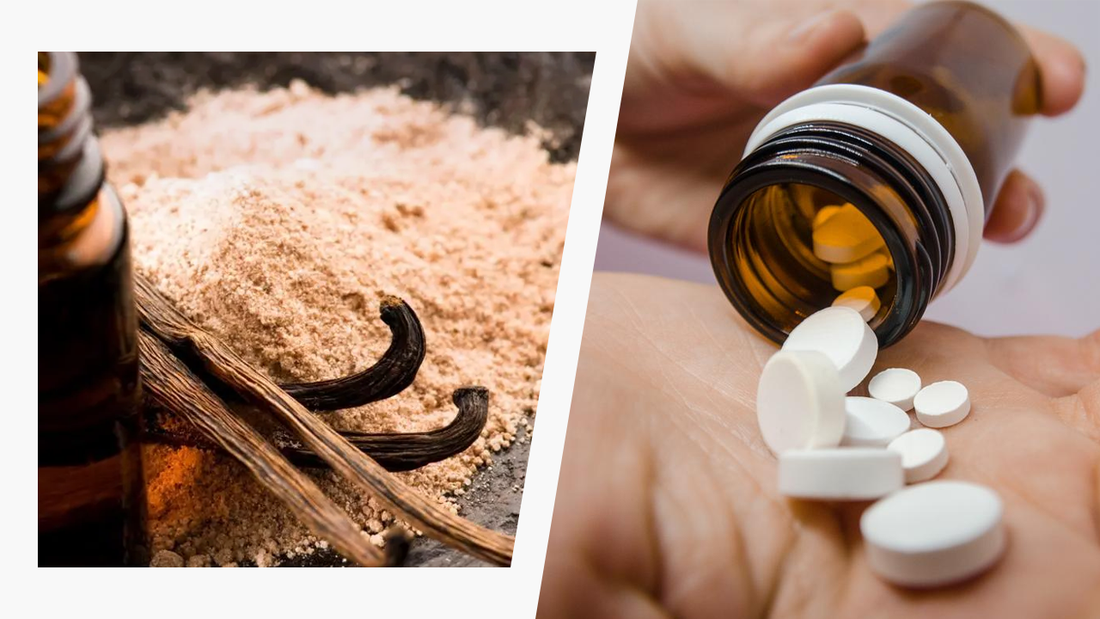Flavoring agents play a crucial role in pharmaceutical preparations. They are widely used in oral syrup, oral suspension, emulsions, chewable tablets, effervescent tablets, dispersible tablets, and ODT. Their purpose is not only to enhance flavors but also to provide a pleasant taste. These agents are employed to enhance patient compliance and improve the palatability of pharmaceutical dosage forms.
Flavoring agents in pharmaceutical grade are commonly found in two forms: a) powder and b) liquid. The term "flavor" encompasses a blend of taste, smell, touch, sight, and sound, resulting in a vast range of perceptions for a given chemical substance. The four primary tastes—salty, sour, bitter, and sweet—seem to arise from a combination of psychological factors and physicochemical properties.
On the basis of physical form they are divided into two types:
A. Solid flavouring agents
Both natural and pharmaceutical synthetic flavouring agents come in solid form. Some examples include mango flavour powder, pineapple flavour powder, etc.
B. Liquid flavouring agents
These flavouring agents are available in liquid form and can be either natural or artificial. Examples include essential oils like peppermint oil, orange oil, methyl salicylate, lemon oil, and others.
Natural vs synthetic pharmaceutical flavouring agents?
Pharmaceutical formulations can utilize both natural and artificial flavouring agents. Natural flavouring agents are derived from plants, fruits, herbs, and spices through processes like extraction or distillation. On the other hand, artificial flavouring agents are chemically synthesized compounds that mimic specific flavours found in nature. These synthetic flavours are created through a combination of chemicals.
The choice between natural and artificial flavours depends on various factors such as the product's purpose, patient preferences, and stringent regulatory considerations.
Both types of flavouring agents aim to improve the taste and palatability of pharmaceutical formulations, particularly in oral dosage forms, while adhering to rigorous quality control measures and regulatory guidelines.
Popular examples of pharmaceutical flavouring agents include:
Menthol
Menthol is used extensively in pharmaceutical formulations, mainly in antacid tablets and suspension. It can deliver a cooling or refreshing sensation and is employed in topical applications.
Spearmint
Spearmint oil (SMO) is widely utilized in oral care products and boasts a range of intriguing properties, particularly its potential as an anticancer agent. The primary component found abundantly in spearmint oil globally is R-(−)-carvone, which imparts the distinctive smooth aroma characteristic of spearmint. Additionally, it contains significant concentrations of limonene, dihydrocarvone, and 1,8-cineole.
Thymol
Thymol, a phenolic monoterpene, serves as the principal constituent in thyme oil. Structurally resembling carvacrol with the presence of a hydroxyl group, thymol (2-isopropyl-5-methylphenol) is predominantly found in various thyme species. It stands as one of the key compounds present in thyme essential oil.
For centuries, both thymol and thyme essential oil have been employed in traditional medicine for their expectorant, anti-inflammatory, antiviral, antibacterial, and antiseptic properties, particularly in treating ailments of the upper respiratory system. In the quest for exploring new biological and therapeutic applications of natural plant compounds with established structures, thyme essential oil and thymol have garnered significant attention. Additionally, thymol is commonly used to provide a distinct, almost minty flavour.
Key factors to determine the right flavour
The taste buds possess sensitivity to several fundamental tastes, including sweet, sour, bitter, salt, and potentially metallic and alkaline sensations. However, their response is influenced by additional factors such as temperature, physical properties, and distinct characteristics like astringency and pungency of the flavoured substance. Age also plays a role in flavour acceptance. Generally, children tend to favour fruit-flavoured syrups, adults lean towards more acidic tastes, and many elderly individuals find mint or wine flavours more pleasant. It's worth noting that the response to flavours can differ between health and disease, and a flavour that may be acceptable for a short period can become objectionable if the treatment is prolonged.
If you are planning to buy pharmaceutical flavouring agents, contact SBBLG today! We have a vast selection of flavours and fragrances suitable for a wide range of pharmaceutical products.





